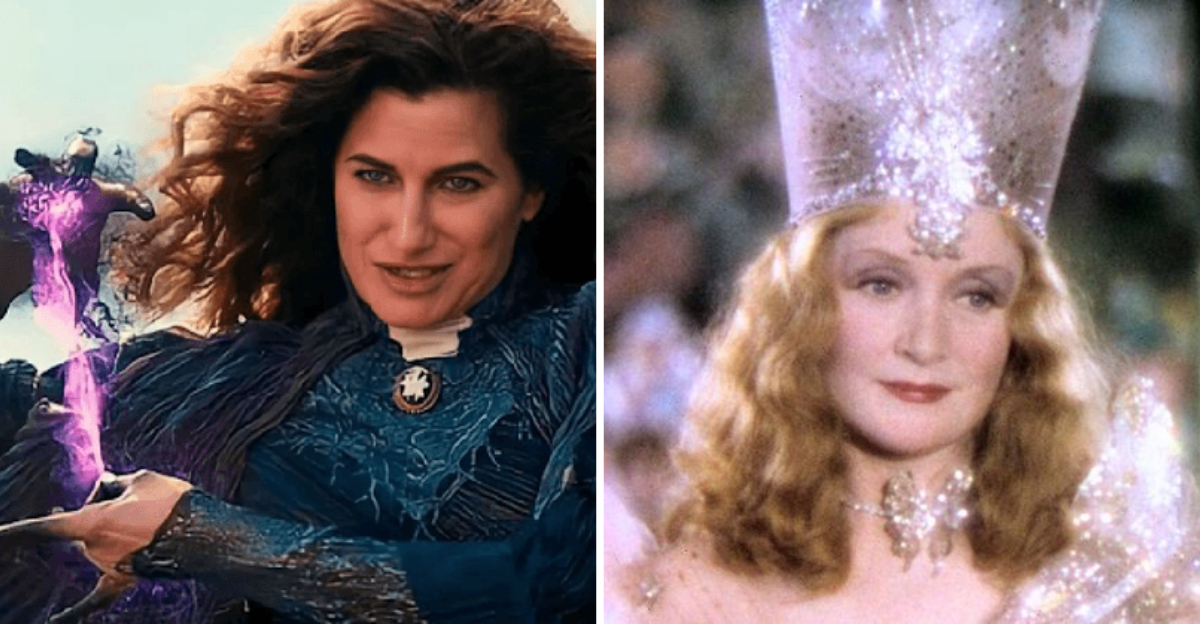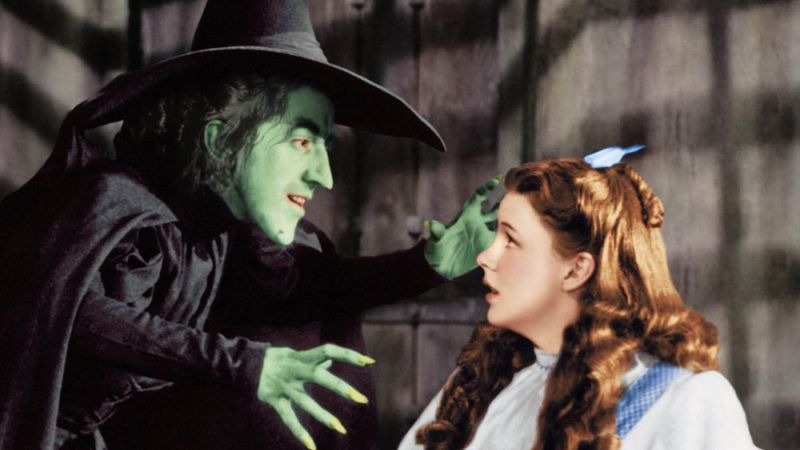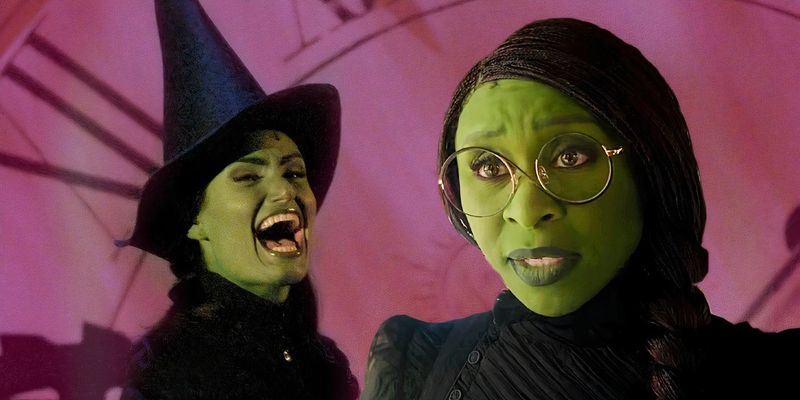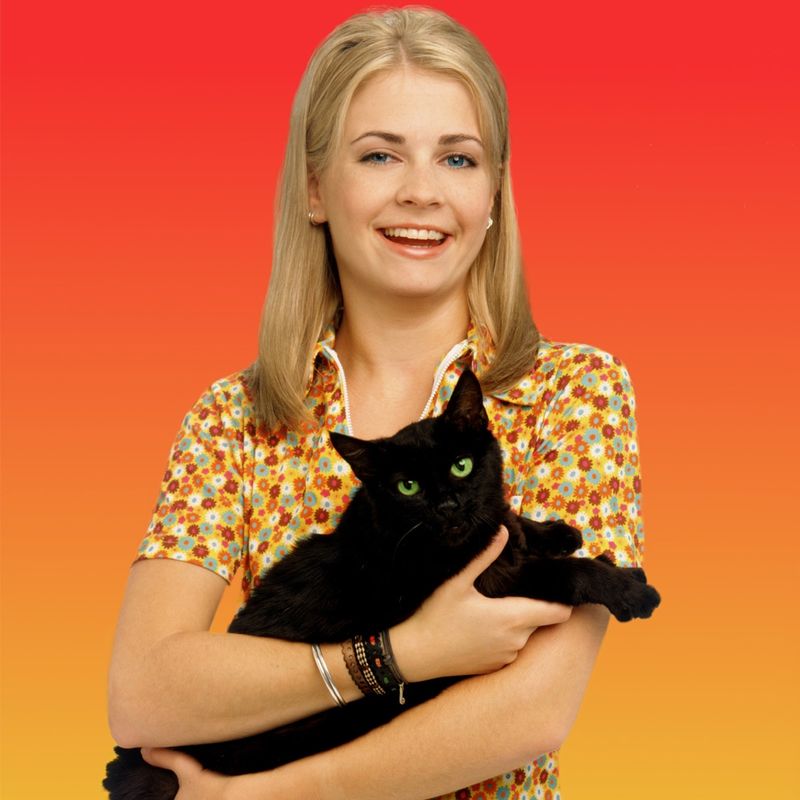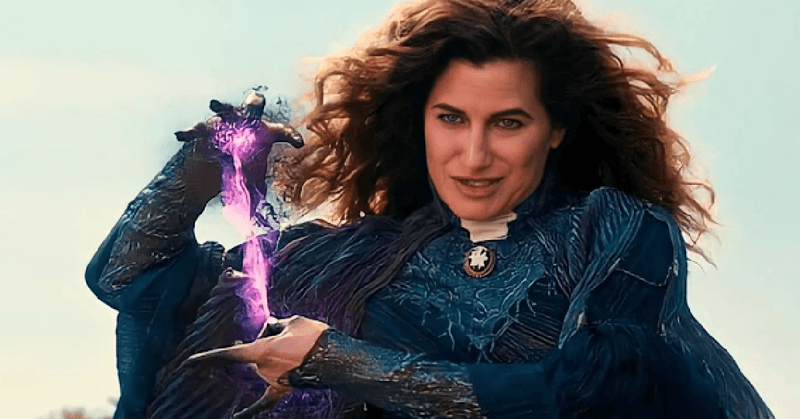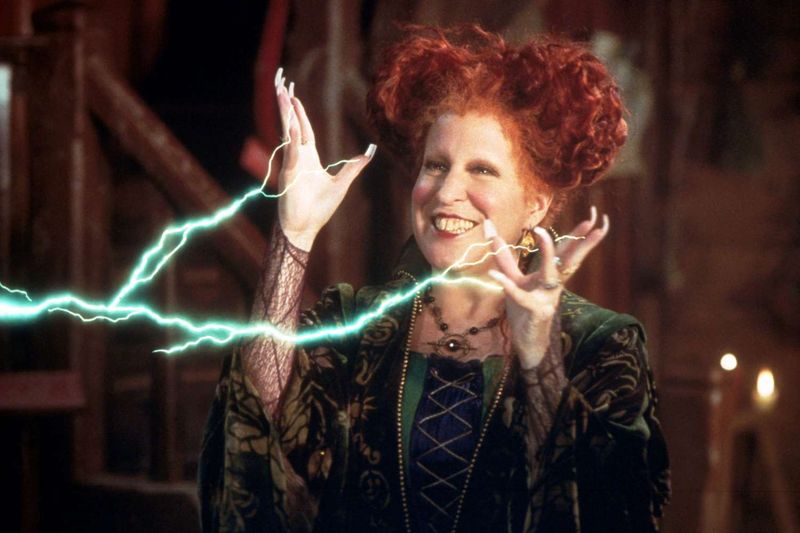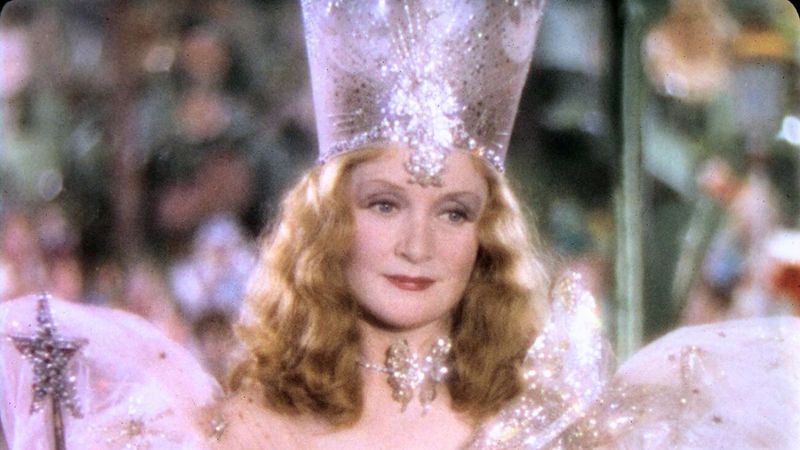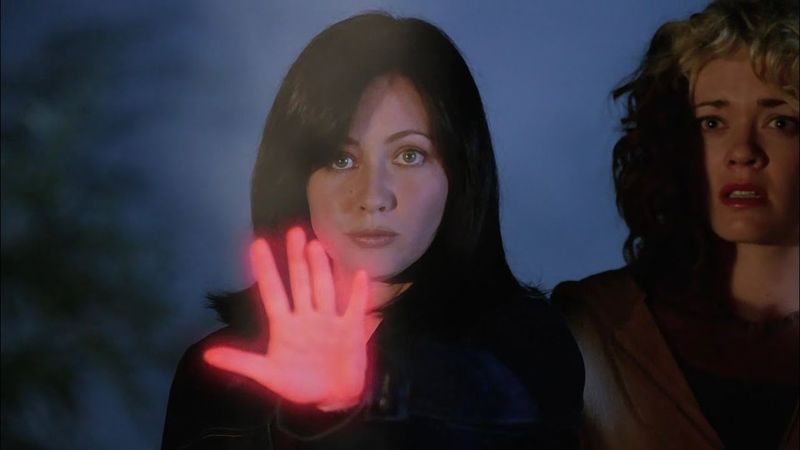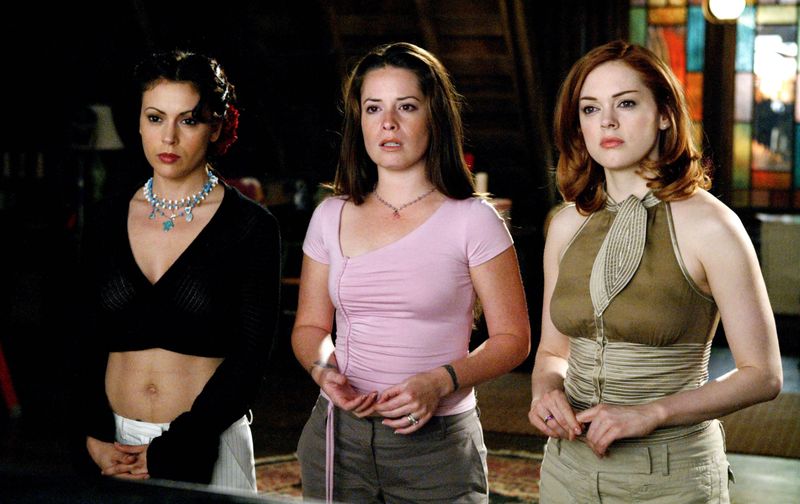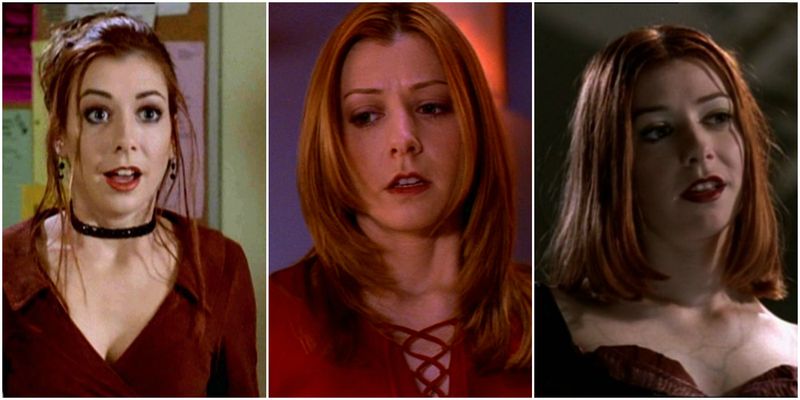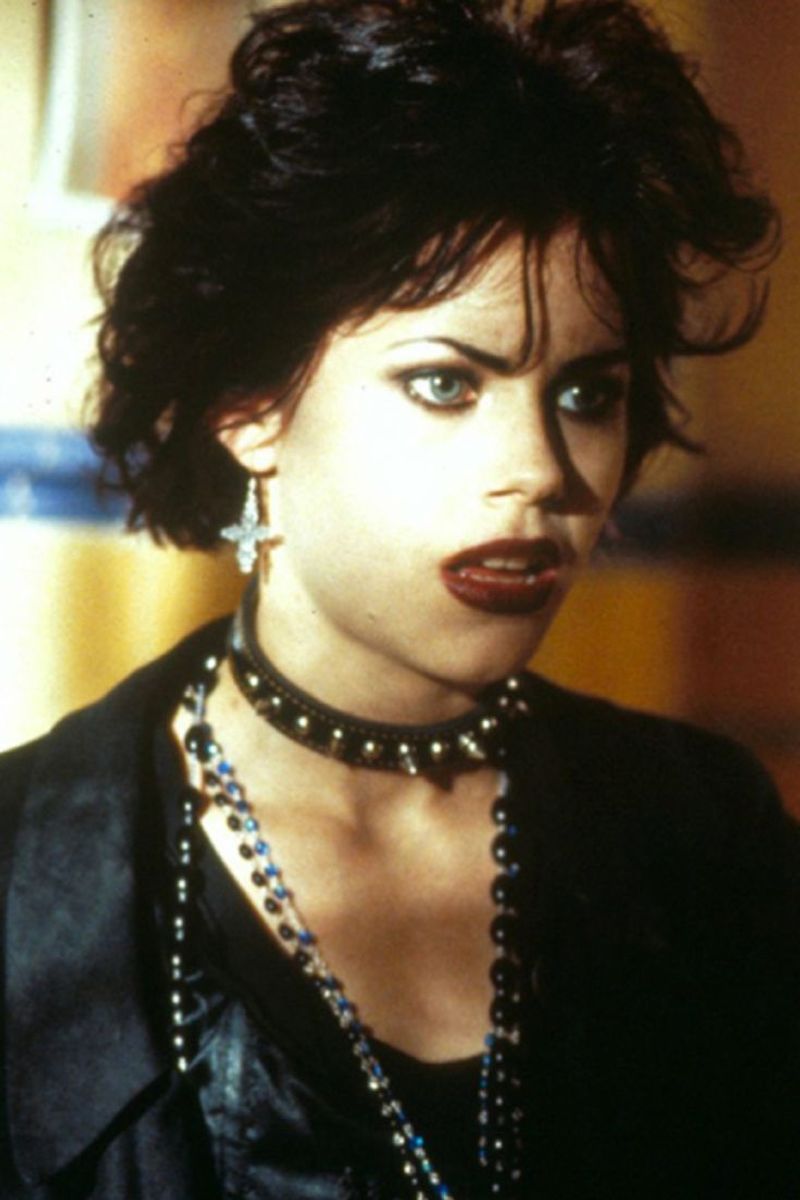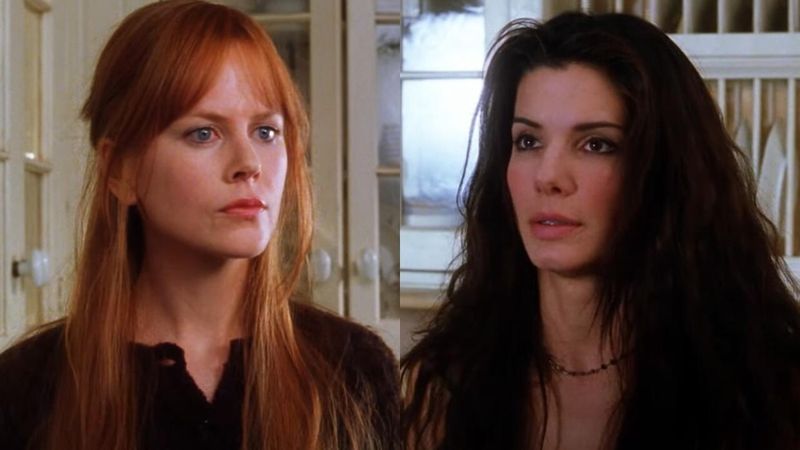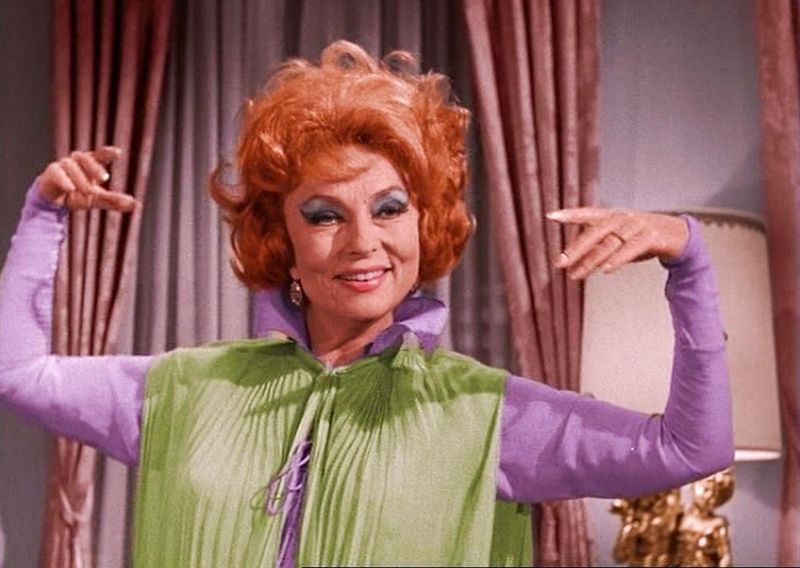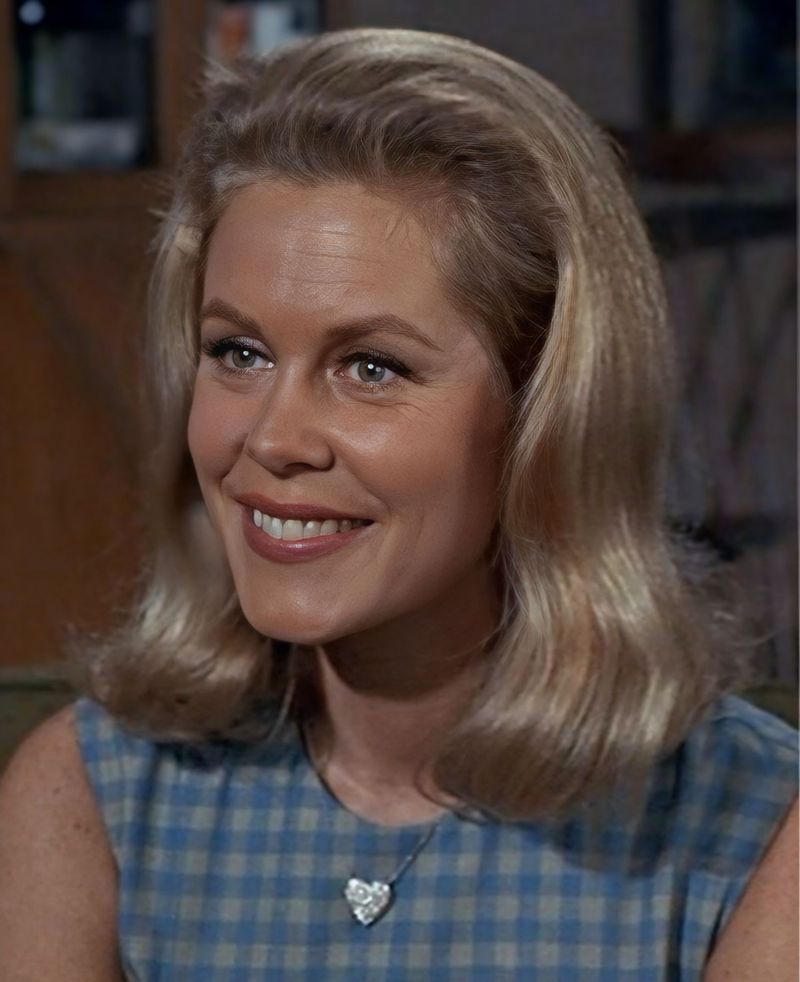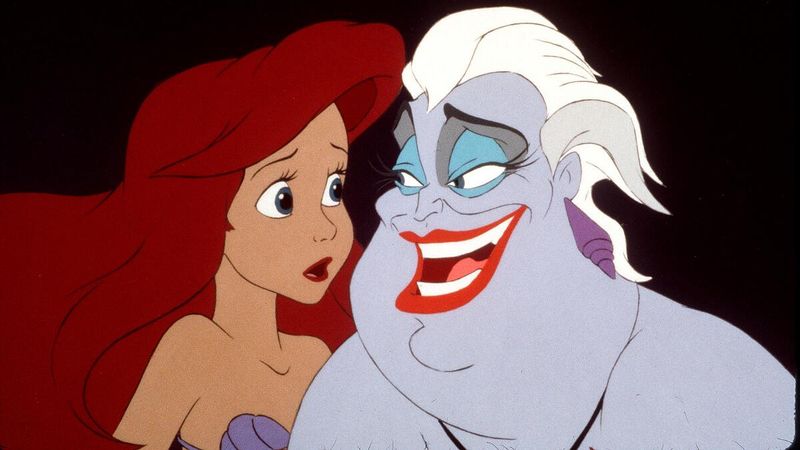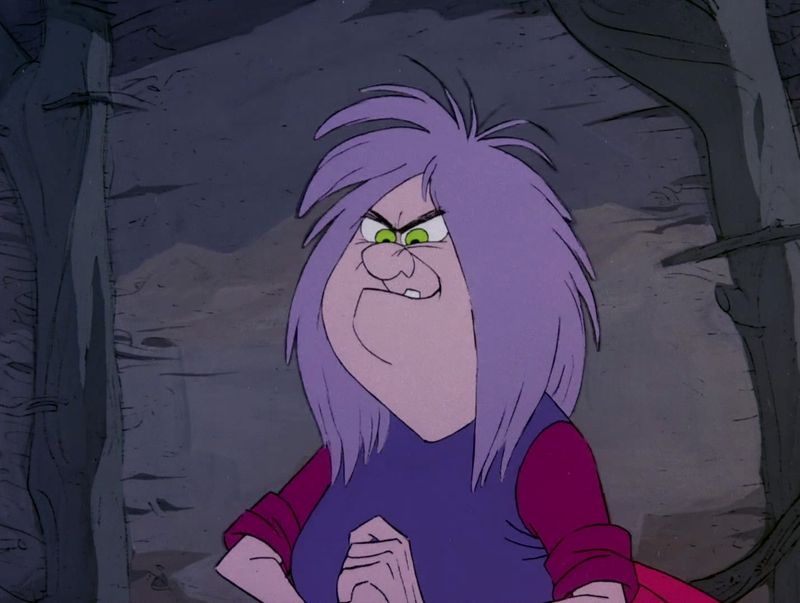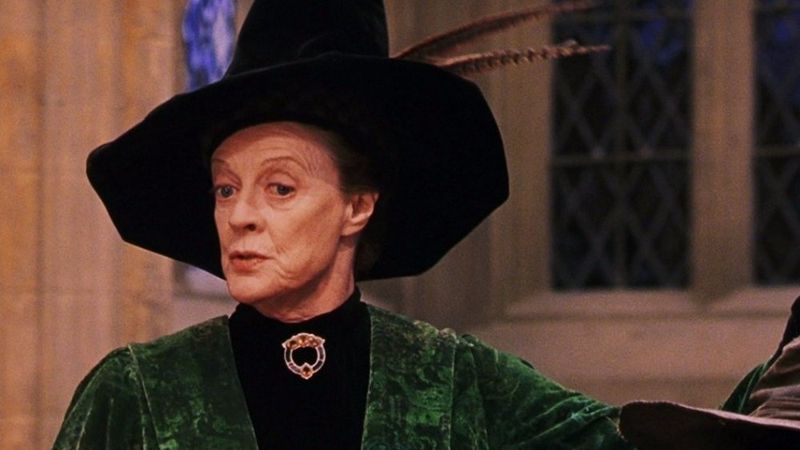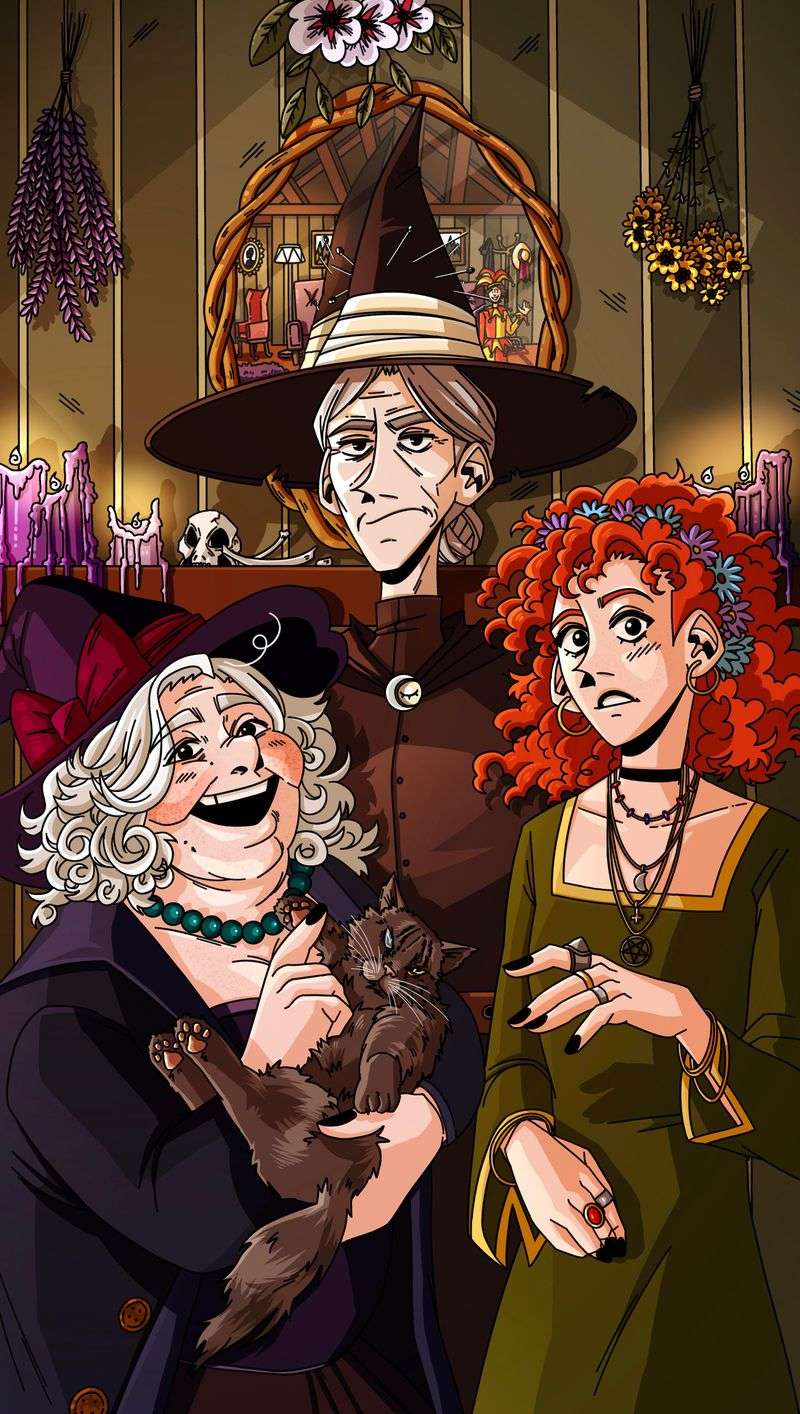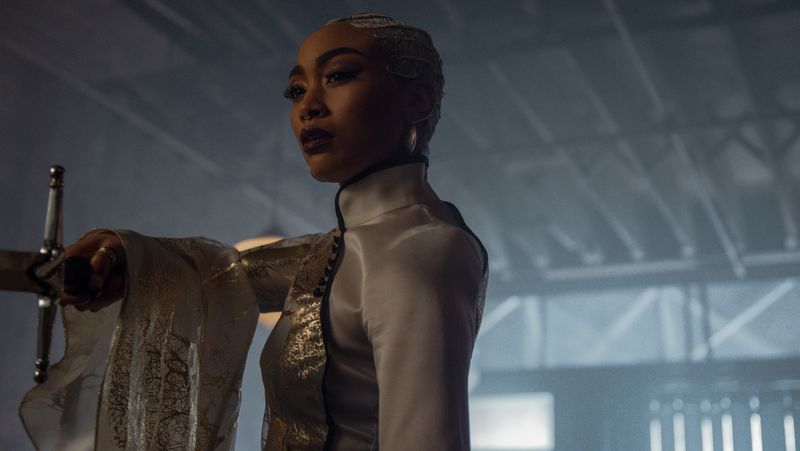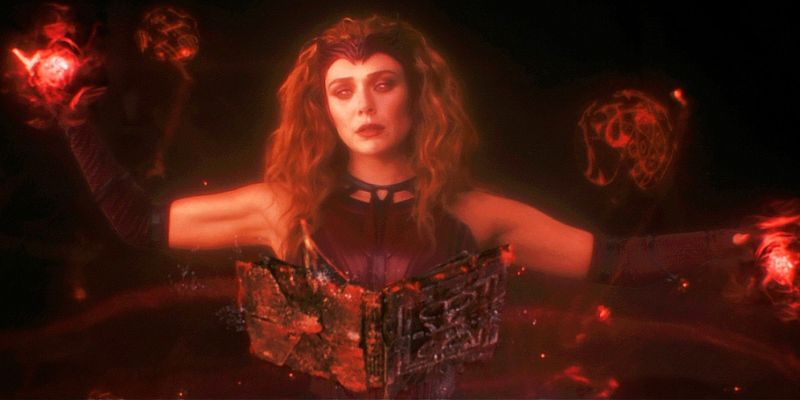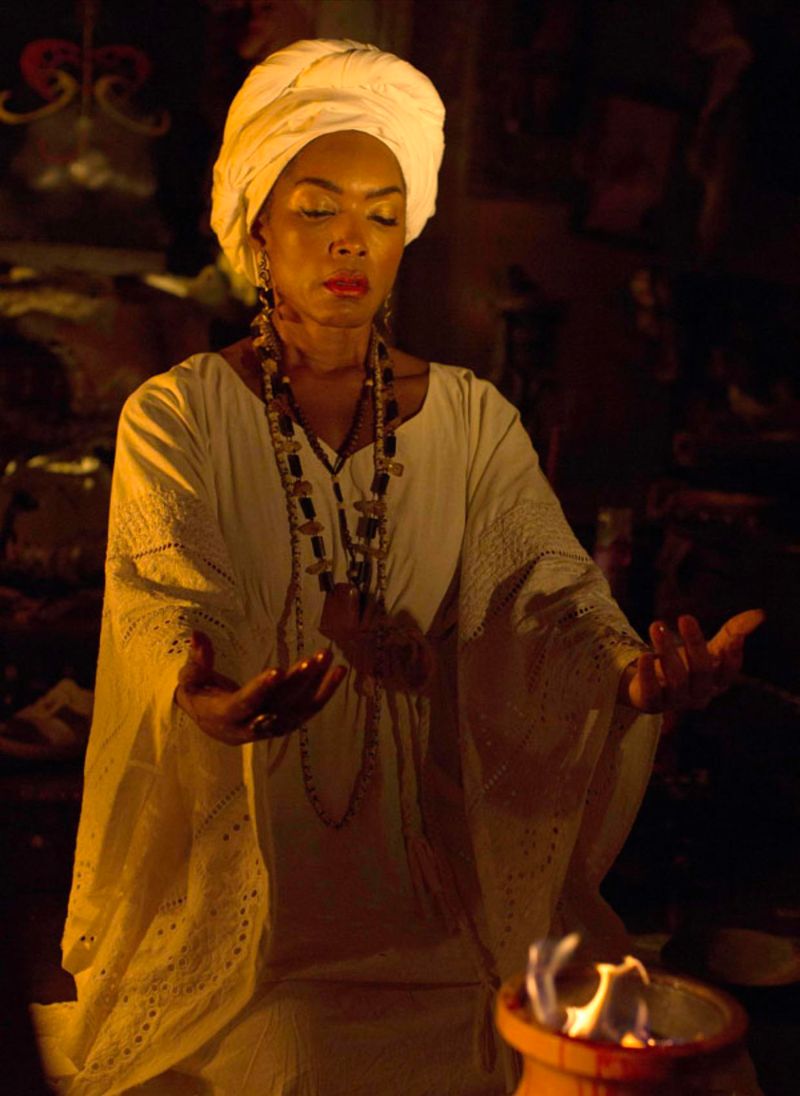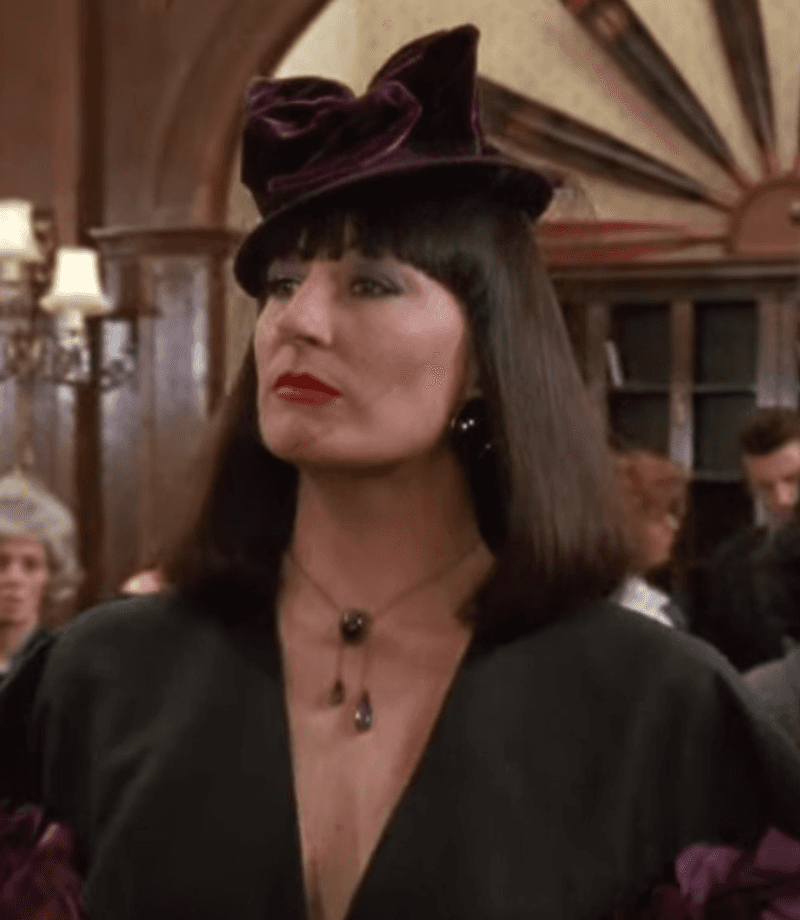Witches have bewitched our screens, pages, and imaginations for generations. From cackling villains to misunderstood heroes, these magical women have shaped how we view female power in entertainment. Their spells, potions, and personalities have left lasting impressions on audiences young and old, transforming from scary stereotypes into complex characters with depth and nuance.
1. The Wicked Witch of the West
Margaret Hamilton’s green-skinned antagonist from 1939’s “The Wizard of Oz” created the template for every witch that followed. Her iconic cackle, pointy hat, and flying broomstick became instantly recognizable symbols of witchcraft in American culture.
What many don’t realize is Hamilton suffered first-degree burns filming the Munchkinland disappearance scene when pyrotechnics ignited too quickly. Despite this painful experience, she continued playing witches throughout her career.
Her famous threat to Dorothy—”I’ll get you, my pretty, and your little dog too!”—remains one of cinema’s most quoted villain lines, cementing her legacy as the quintessential scary witch.
2. Elphaba
Before she was the Wicked Witch, she was Elphaba – the misunderstood green girl from Gregory Maguire’s novel “Wicked” and the smash Broadway musical it inspired. Her transformation from bullied student to powerful witch challenged audiences to reconsider the original Oz narrative.
Idina Menzel’s portrayal in the stage production won her a Tony Award and established Elphaba as a feminist icon. Her showstopping number “Defying Gravity” became an anthem for anyone who’s ever felt different.
Elphaba’s story reminds us that history is written by the victors, and that so-called villains often have complex motivations behind their actions.
3. Sabrina Spellman
Melissa Joan Hart’s portrayal of the teenage witch with a talking cat named Salem defined ’90s magical television. Balancing high school drama with supernatural powers, Sabrina made witchcraft feel accessible and fun for a generation of young viewers.
The show’s blend of sitcom humor and magical mishaps created a formula that influenced teen supernatural shows for decades. Unlike darker witches, Sabrina used her powers for everyday problems like acing tests or getting revenge on mean girls.
The character has since been reimagined in the darker “Chilling Adventures of Sabrina,” but Hart’s cheerful spell-caster remains beloved for making witchcraft seem like the perfect solution to teenage awkwardness.
4. Hermione Granger
Emma Watson brought J.K. Rowling’s brilliant young witch to life, creating a character who valued intelligence and hard work over natural talent. Her famous line “It’s leviOsa, not levioSA” showcased both her perfectionism and her exceptional magical abilities.
Hermione broke the mold by being neither evil nor relegated to a sidekick role. Instead, she frequently saved Harry and Ron with her quick thinking and extensive knowledge of spells.
For many millennial girls, Hermione represented the revolutionary idea that being the smartest witch in the room was something to aspire to, not hide. Her character growth from know-it-all to compassionate hero made her journey especially meaningful.
5. Agatha Harkness
Kathryn Hahn stole the show in “WandaVision” as the nosy neighbor who turned out to be a centuries-old witch. Her reveal as the series’ antagonist, complete with the earworm “Agatha All Along” theme song, became an instant cultural phenomenon.
Marvel’s take on witchcraft through Agatha introduced mainstream audiences to a more complex witch archetype – neither purely evil nor good, but self-serving and darkly humorous. Her purple-hued magic and theatrical flair made her visually distinctive in a universe already filled with powerful beings.
Agatha’s popularity spawned her own spinoff series, proving that audiences have evolved to appreciate witches with moral ambiguity and compelling backstories.
6. Winifred Sanderson
Bette Midler’s buck-toothed, red-haired witch from “Hocus Pocus” combined campy villainy with musical talent. Her performance of “I Put a Spell on You” remains one of the most memorable witch scenes in family film history.
Winifred’s over-the-top personality and sibling dynamics with her sisters Mary and Sarah created a witch trio that was as funny as they were frightening. Despite being child-hungry villains, the Sanderson sisters somehow became beloved Halloween icons.
The film initially flopped but found new life through annual October television airings. Winifred’s quotable lines and Midler’s theatrical performance turned what could have been a forgettable character into a witch who returns every Halloween season.
7. The Sanderson Sisters
While Winifred might lead the coven, the combined power of all three Sanderson sisters created Halloween movie magic. Mary (Kathy Najimy) with her crooked smile and Sarah (Sarah Jessica Parker) with her siren song completed the dysfunctional family unit.
Their different personalities – Winifred’s ambition, Mary’s loyalty, and Sarah’s ditzy seduction – made them a perfectly balanced trio of troublemakers. The sisters’ costumes have become popular group Halloween costumes, allowing friends to embody their distinctive personalities.
The 2022 sequel proved their enduring popularity, as audiences eagerly welcomed the return of these child-hunting witches who somehow became family-friendly entertainment icons despite their villainous goals.
8. Glinda the Good Witch
Billie Burke’s bubble-traveling good witch provided the gentle counterbalance to the Wicked Witch in “The Wizard of Oz.” Her sparkling crown, magical wand, and pink gown created a visual template for benevolent witchcraft that influenced decades of positive witch portrayals.
Glinda’s famous line “Are you a good witch or a bad witch?” established the moral binary that would define witches in children’s entertainment for generations. Her character became more complex in “Wicked,” where her seemingly perfect facade hid more complicated motivations.
As one of cinema’s earliest positive witch representations, Glinda helped establish that magical women could be forces for good, not just cackling villains to be feared.
9. Prue Halliwell
Shannen Doherty’s eldest Halliwell sister from the hit series “Charmed” redefined witches for the late ’90s television audience. Her telekinetic powers and protective nature established her as the serious, responsible leader of the Power of Three.
Prue’s no-nonsense approach to demon-fighting and her struggle to balance magical duties with a normal career resonated with viewers. Her character tackled adult themes rarely associated with witches before, including grief, professional ambition, and sisterly responsibility.
Though her character was written out after three seasons, Prue’s impact on the series remained significant. She helped establish “Charmed” as a show that treated witchcraft as both a burden and a gift.
10. Phoebe and Piper Halliwell
Alyssa Milano’s Phoebe and Holly Marie Combs’ Piper completed the original Charmed Ones trio, each bringing unique magical abilities and personalities to the coven. Phoebe’s premonitions and martial arts skills contrasted with Piper’s molecular manipulation powers and nurturing nature.
Unlike traditional witches, these sisters fought for good while navigating romances, careers, and eventually motherhood. Their character development over eight seasons showed witches as complex women whose magical abilities were just one aspect of their identities.
The sisters’ bond remained the heart of the show even after Prue’s departure and half-sister Paige’s arrival. Their relationships proved that modern witch stories could be as much about family dynamics as spellcasting.
11. Willow Rosenberg
Alyson Hannigan’s character evolution from shy computer nerd to powerful witch on “Buffy the Vampire Slayer” created one of television’s most compelling magical journeys. Starting with floating pencils and progressing to world-threatening dark magic, Willow’s powers grew alongside her confidence.
Her relationship with Tara marked groundbreaking LGBTQ+ representation, showing a witch couple whose love was portrayed with depth and tenderness. Creator Joss Whedon used Willow’s addiction to magic as a metaphor for real-world substance abuse, adding psychological complexity to her witchcraft.
Willow’s famous line “I think I’m kinda gay” normalized the idea that witches could be queer, helping reshape both witch and lesbian representation in popular media.
12. Nancy Downs
Fairuza Balk’s unhinged performance as troubled teen witch Nancy in 1996’s “The Craft” created an unforgettable portrait of witchcraft as rebellion. With her black lipstick, wild eyes, and chaotic energy, Nancy embodied the dark appeal of magical power for marginalized young women.
Her famous line “We are the weirdos, mister” became an anthem for outsiders everywhere. Nancy’s descent from bullied outcast to power-mad witch highlighted the film’s warning about magic without moral boundaries.
Despite being the villain, many viewers secretly rooted for Nancy’s revenge against her abusers. Her character tapped into genuine adolescent rage, making her one of the most psychologically authentic witches in cinema.
13. Sally and Gillian Owens
Sandra Bullock and Nicole Kidman portrayed these cursed sisters in 1998’s “Practical Magic,” bringing warmth and authenticity to their witch characters. Raised by eccentric aunts after their parents’ deaths, the sisters represented opposite approaches to their magical heritage – Sally rejecting it for normalcy while Gillian embraced its wildness.
The film’s midnight margarita scenes and kitchen witchery showcased a homey, feminine magic rooted in everyday life and sisterhood. Their battle against an abusive boyfriend’s ghost added supernatural elements to what was essentially a story about family bonds and healing generational trauma.
The Owens women helped popularize a cozy vision of witchcraft centered on herbs, candles, and female solidarity rather than broomsticks and cauldrons.
14. Endora
Agnes Moorehead’s flamboyant mother-in-law witch from the 1960s sitcom “Bewitched” delivered magical mischief with impeccable style. Her colorful caftans, dramatic eye makeup, and theatrical entrances made her visually unforgettable.
Endora’s constant mispronunciation of son-in-law Darrin’s name (“Durwood,” “Darwin”) and her magical pranks against him represented her disapproval of her daughter marrying a mortal. Her character embodied the classic meddling mother-in-law stereotype but with supernatural abilities to back up her interference.
Despite her antagonistic role, Endora’s witty one-liners and genuine love for daughter Samantha made her lovably irritating rather than truly villainous. She represented old-school witchcraft resistant to modern assimilation.
15. Samantha Stephens
Elizabeth Montgomery’s nose-twitching suburban witch from “Bewitched” revolutionized how witches were portrayed in popular culture. Her character balanced magical abilities with the desire to live as a normal housewife, creating comedic tension that drove the show’s eight-season run.
Samantha’s famous nose wiggle to cast spells became one of television’s most recognizable character quirks. The show’s premise – a witch trying to suppress her powers to please her mortal husband – has been interpreted by scholars as everything from anti-feminist to secretly subversive.
Her character established that witches could be beautiful, kind, and domesticated – a major departure from the ugly crones of fairy tales. Samantha paved the way for the normalized witches of modern entertainment.
16. Maleficent
Originally voiced by Eleanor Audley in Disney’s 1959 “Sleeping Beauty,” this self-proclaimed “Mistress of All Evil” set the standard for elegant villainy. Her striking design – horned headdress, flowing black and purple robes, and glowing staff – created an instantly recognizable silhouette that influenced witch aesthetics for generations.
Maleficent’s calm, sophisticated demeanor made her more terrifying than ranting villains. Her transformation into a dragon during the film’s climax demonstrated her formidable magical powers.
Angelina Jolie’s live-action portrayal decades later reimagined her as a wronged fairy seeking revenge, adding complexity to a character originally defined by pure malevolence. Both versions cemented Maleficent as Disney’s most iconic witch-adjacent villain.
17. Ursula
This tentacled sea witch from Disney’s “The Little Mermaid” brought drag queen energy to children’s animation. Inspired by Divine and voiced by Pat Carroll, Ursula’s voluptuous figure, dramatic makeup, and theatrical personality made her deliciously villainous.
Her show-stopping number “Poor Unfortunate Souls” revealed her manipulative nature as she convinced Ariel to trade her voice for human legs. Ursula’s character design brilliantly combined octopus tentacles with human features to create a witch who was physically imposing yet strangely charismatic.
Her collection of shrunken, writhing souls visualized the consequences of making deals with witches. Despite her villainy, Ursula’s confidence and business savvy made her perversely admirable to many viewers.
18. Madam Mim
This lesser-known Disney witch from 1963’s “The Sword in the Stone” delivered magical mayhem with gleeful abandon. Voiced by Martha Wentworth, Mim’s signature purple hair and ability to transform into various animals made her visually distinctive.
Her musical number “Mad Madam Mim” established her as delightfully unhinged, proudly declaring herself “mad, mad, mad!” The wizard’s duel between Mim and Merlin showcased creative shapeshifting magic rarely seen in animation before.
Unlike other Disney villains motivated by power or revenge, Mim simply enjoyed being wicked for wickedness’ sake. Her infectious energy and lack of true malice made her more comedic than threatening, establishing a template for the bumbling but magical antagonist.
19. Minerva McGonagall
Maggie Smith’s portrayal of Hogwarts’ Transfiguration professor and Gryffindor Head of House brought dignity and authority to witchcraft. Her stern exterior hiding a fiercely protective nature made her a beloved figure in the Harry Potter series.
McGonagall’s ability to transform into a tabby cat demonstrated her exceptional magical skill. Her famous line to Umbridge—”I should have made my meaning plainer… I will assist you to become an Auror if it is the last thing I do!”—revealed her willingness to stand up to authority figures who threatened her students.
Unlike flashier characters, McGonagall represented disciplined, ethical witchcraft and the importance of magical education. Her character showed that elderly witches could be powerful, respected leaders rather than cackling crones.
20. Nanny Ogg
Created by fantasy author Terry Pratchett for his Discworld novels, Gytha “Nanny” Ogg represents the earthy, sensual side of witchcraft. A mother of countless children and grandmother to even more, Nanny approaches magic with practical wisdom and bawdy humor.
Famous for her inappropriate drinking songs and questionable cookbook (“The Joye of Snacks”), Nanny balances her friend Granny Weatherwax’s severity. Her cat Greebo – a one-eyed battle-scarred tom who thinks he’s still a kitten – perfectly complements her personality.
Though never adapted for major screens, Nanny remains beloved in literary witch circles for representing the witch as life-affirming community matriarch. Her character celebrates female sexuality and joy well into old age.
21. Mildred Hubble
The protagonist of Jill Murphy’s “The Worst Witch” series and its various adaptations embodies the underdog witch archetype. Clumsy, forgetful, and perpetually in trouble at Miss Cackle’s Academy, Mildred nonetheless possesses a good heart and surprising resourcefulness.
Her messy hair, crooked hat, and constantly untucked shirt made her relatable to children who felt they couldn’t measure up to expectations. Unlike naturally gifted witches, Mildred must work twice as hard for half the results, making her triumphs more meaningful.
The character has been portrayed by several actresses across different adaptations, but her core appeal remains consistent: she’s the witch who proves that determination can be as valuable as natural talent.
22. Prudence Blackwood
Tati Gabrielle’s portrayal of this ambitious witch in Netflix’s “Chilling Adventures of Sabrina” updated the mean girl archetype with occult overtones. Her distinctive white-blonde hair and dark lipstick created a striking visual contrast reflecting her complex nature.
As leader of the Weird Sisters trio, Prudence initially bullied Sabrina but gradually developed into a nuanced character with her own motivations and traumas. Her discovery that Father Blackwood was her biological father added painful dimensions to her character’s journey.
Prudence’s expertise in dark magic and willingness to use torture made her genuinely dangerous, yet her loyalty to her sisters showed her capacity for love. She represented a modern witch navigating patriarchal traditions while seeking her own power.
23. Wanda Maximoff
Elizabeth Olsen’s journey from Avenger to full-fledged Scarlet Witch in the Marvel Cinematic Universe revolutionized how witchcraft is portrayed in superhero stories. Her chaos magic, reality-warping abilities, and distinctive red energy effects created a visual language for witchcraft that felt both ancient and modern.
“WandaVision” explored her grief through the lens of magical power, showing how emotional trauma could manifest through witchcraft. Her famous line “But what is grief, if not love persevering?” connected her magical abilities to universal human experiences.
Wanda’s evolution into a morally ambiguous character willing to break reality to reclaim her lost family added psychological depth rarely seen in witch characters. Her costume’s transformation from practical superhero gear to the iconic Scarlet Witch headdress visually completed her witch journey.
24. Marie Laveau
Angela Bassett’s portrayal of the historical Voodoo Queen of New Orleans in “American Horror Story: Coven” brought attention to non-European magical traditions. Based on a real 19th century practitioner, this fictionalized version wielded immortality and formidable spiritual powers.
Her character highlighted the racial dynamics of American witchcraft, contrasting the privileged white coven with her own Voodoo practice. Bassett’s regal performance gave Marie both intimidating power and emotional depth, especially in scenes exploring the painful history between white witches and Black practitioners.
Though taking significant liberties with the historical figure, the character introduced mainstream audiences to Voodoo as a legitimate magical tradition with its own rules and cultural significance.
25. The Grand High Witch
Anjelica Huston’s terrifying performance in the 1990 adaptation of Roald Dahl’s “The Witches” created nightmare fuel for a generation of children. Her revealed form – with elongated fingers, square feet, and a grotesque face – demonstrated practical effects at their most disturbing.
Unlike sexualized or romanticized witches, the Grand High Witch was purely monstrous, her beautiful human disguise hiding something truly inhuman. Her thick German accent and violent hatred of children made her genuinely frightening in a children’s film landscape often softened for younger viewers.
Anne Hathaway’s 2020 reimagining of the character couldn’t match the visceral horror of Huston’s performance, proving that sometimes practical effects create more memorable witch villains than CGI.
